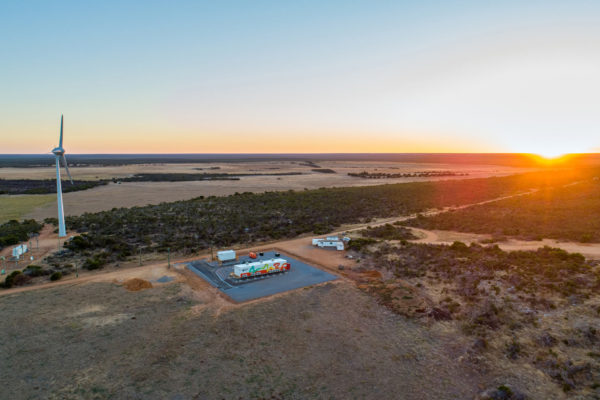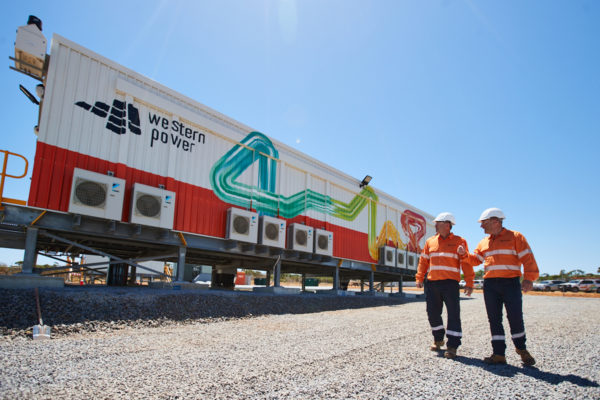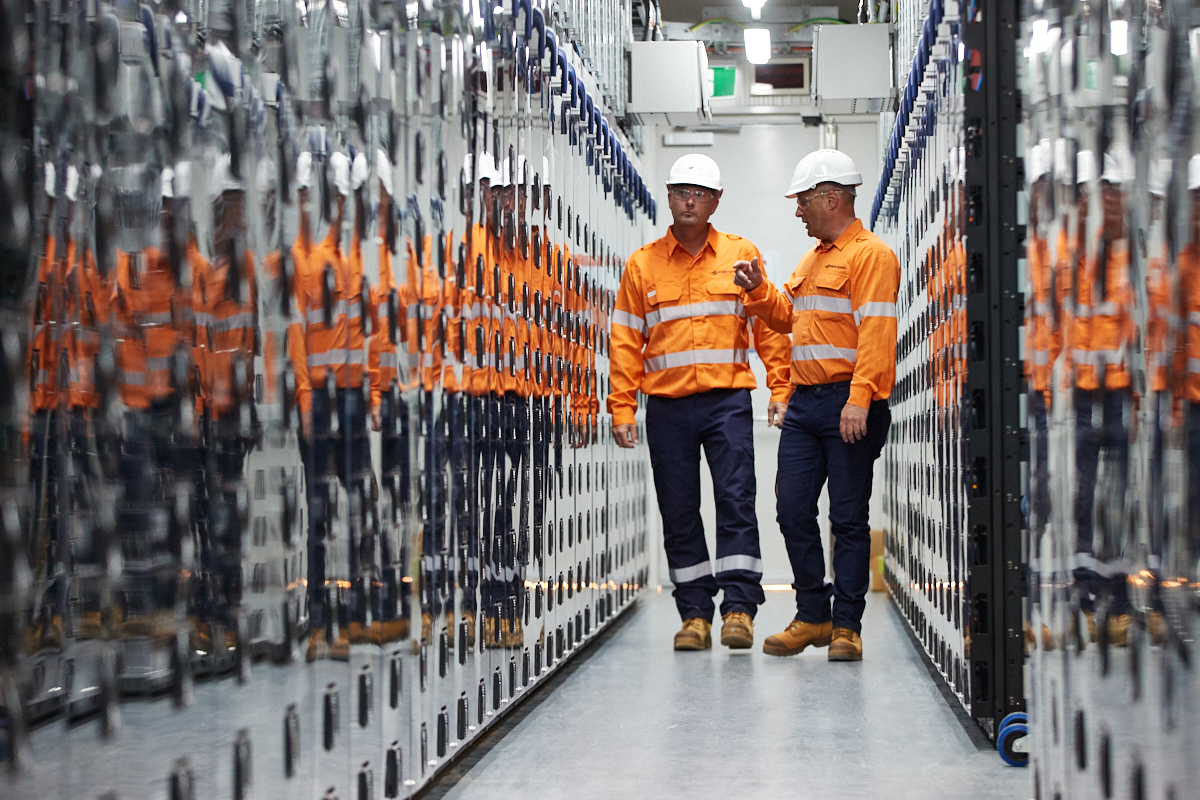Western Australia grid operator Western Power this week announced the $15 million Kalbarri microgrid, which will utilise wind and solar PV power, battery energy storage and the grid to improve the reliability of electricity supply to the remote community on the state’s mid-west coast, has been switched on.
“It’s ‘power on’ for the Kalbarri microgrid,” Western Power said in a social media post.
“Today our renewable microgrid in Kalbarri, the largest of its kind in Australia, was officially launched.
“The local wind farm, residential solar panels and a big battery power this high-tech microgrid, dramatically improving power reliability in this edge-of-the-grid town. And it’s already saved hours of power outages.”
The microgrid, developed by Western Power in partnership with state-owned gentailer Synergy, is powered by 1 MW of feed-in from residential rooftop solar and a 1.6 MW wind farm, backed by a 5 MW/2 MWh battery energy storage system. The smart system is connected to the grid and will be able to reverse power flows overnight when stored energy is insufficient to meet demand and disconnect from the larger network should a fault occur.
Western Power said the project is one of Australia’s largest microgrids capable of operating in complete renewable mode.
“It can run independently or connect to the main electricity network. During an outage the microgrid maintains supply to the community using both solar and wind, and stored energy in the battery,” the grid operator said.

Image: Western Power
First announced in 2016, the microgrid was originally scheduled to come online more than three years ago but it has been beset by multiple delays, during which the Kalbarri community has been forced to deal with ongoing energy supply problems and extended outages.
The coastal tourist town, about 600 kilometres north of Perth, is at the end of a 140-kilometre-long rural feeder line connecting it to the South West Interconnected System (SWIS) at Geraldton.
About 1,500 customers and more than 100,000 visitors to the town each year are served by the 33 kV feeder line which is exposed to the elements and susceptible to interference which can cause extended outages.
Western Power said the microgrid is expected to eliminate 80% of outages experienced by the town and can significantly reduce the length of outages.
“The microgrid uses leading-edge technology to minimise disruptions, and in the event of a network interruption can run independently from the main electricity network,” Western Power said.
“This advanced system will address even momentary outages, responding in milliseconds to maintain a seemingly uninterrupted power supply.”
Western Power said the modular design of the $15 million project, the state’s fourth microgrid, allows for future renewable generation sources to be integrated as they become available.

Image: Western Power
Energy Minister Bill Johnston said improving how energy is delivered in regional areas and delivering better power reliability for Western Australians is a key part of the government’s Distributed Energy Resources Roadmap.
“The Kalbarri microgrid is an important step towards improving power reliability for the local community,” he said.
“It also paves the way in delivering greater renewable energy solutions across WA, particularly in regional areas, as we move forward in achieving net zero emissions by 2050.
Mining and Pastoral Region MLC Peter Foster said the microgrid would serve as a blueprint for the delivery of innovative energy solutions throughout the state.
“The new microgrid is one of Australia’s most sophisticated and will be used as a blueprint for other regional areas to support the provision of stable, secure and clean energy into the future,” he said.
The launch of the microgrid coincided with the announcement that Kalbarri District High School (DHS) had been included in Synergy’s Schools Virtual Power Plant (VPP) project.
A 40 kw solar system and a 180 kWh battery energy storage system will be installed at Kalbarri DHS before the end of the year as part of the $8.8 million project.
The Schools VPP regional expansion now includes seven new locations, including in Geraldton and Kalgoorlie, bringing the number of participating schools to 17.
This content is protected by copyright and may not be reused. If you want to cooperate with us and would like to reuse some of our content, please contact: editors@pv-magazine.com.









3 comments
By submitting this form you agree to pv magazine using your data for the purposes of publishing your comment.
Your personal data will only be disclosed or otherwise transmitted to third parties for the purposes of spam filtering or if this is necessary for technical maintenance of the website. Any other transfer to third parties will not take place unless this is justified on the basis of applicable data protection regulations or if pv magazine is legally obliged to do so.
You may revoke this consent at any time with effect for the future, in which case your personal data will be deleted immediately. Otherwise, your data will be deleted if pv magazine has processed your request or the purpose of data storage is fulfilled.
Further information on data privacy can be found in our Data Protection Policy.